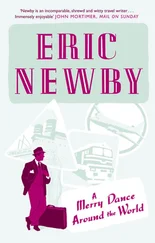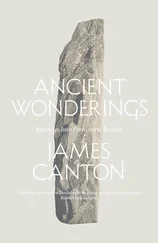IUSE UP my pencils from both ends, which goes to show I’m burning up my life with such impatience, such ardor, such mad generosity, I’m alive, and how the blood boils in my veins! — you, poor larvae, are quite at liberty to wait till the end of time to be born. As for me, I am at every moment moving and fighting, as I have done since my most tender youth, always running through the woods, a real tomboy, or counting the sheep in the fields, a proven method for helping you fall asleep; however, we were talking, on the contrary, about my stupefying energy and indefatigable drive, and it’s true, because I’m using up my pencils from both ends as I write, in the heat of the action, having sucked, nibbled, and chewed on them so much as I stand and gape that I now have at my disposable seven paintbrushes similar to those shafts that were sucked, nibbled, and chewed by the Magdalenian artists, which will do perfectly.
And why, might I ask, is it possible to place whatever you want on a table, everything and anything apart from another table, whereas absolutely nothing seems in a better position to support a table than another table, neither a couch nor a chair, and certainly not a shelf, just try it, a curtain rod even less so, and don’t even mention a street lamp, to the point where I wonder if the second table was not made by the inventor of the first who didn’t know where to put his cumbersome invention, with the sole aim of placing the latter on the former and thereby solving his problem, at least in part, since a third table was then necessary and, for these three stacked tables that he didn’t know where to put, he built a fourth that he placed on a fifth, whence no doubt their rapid and inexorable multiplication and today the incalculable number (thank goodness, for the sum would be frightening) of tables throughout the world — by hoisting myself up on the small kitchen table placed atop the big living room table, I need only stretch my arm to reach the ceiling, because I have decided to begin with the living room ceiling. Why? Because it offers the vastest surfaces in the house on which to paint and I’ve already cleverly solved the problem of scaffolding by setting the big table on the small kitchen table, thanks to which I simply need to stretch my arm to reach it. Besides, what’s the difference, the living room ceiling or another ceiling, you have to start somewhere, here or there, or over there. I could have chosen a wall, but then why one wall and not another rather than a ceiling, why not the living room ceiling, I preferred to put a stop to all that pointless shilly-shallying that accompanies scruples, clumsy justifications, and turns into regrets as soon as it is overcome; in the end the rejected option seems preferable to us, so that the work in progress is botched in the rush to finally tackle the part with which we are obsessed and that we will try to finish even more quickly in order to get back to the previous part that was ruined in our ridiculous haste, leaving us bitter and unsatisfied. It’s best then to do as I do and resolutely stick to the first decision: I’ll start by painting the living room ceiling, then the other ceilings and all the walls, all the nooks and crannies, these crannies with particular care, they are never so narrow that one cannot work on all eights spilling one’s guts, I would not be the first to do so.
It’s an ambitious project, chimerical perhaps, but I feel a nebulous need to carry it out for myself and my fellow creatures. This new activity will allow us to convey our difference, at last we will dare to assert our specificity among all the living species, we will fight resourcefully against our inferior, humiliating condition, to which our lack of instinct and our constitutional weakness has condemned us. We too will have our exclusive characteristics, our originality, our rites, our mating dances, our pavanes, our reference points in time and space; we will stop defining ourselves by our shortcomings and our infirmities. We will cease to be vague. We will take shape. The human being will be recognized, acknowledged, identifiable, irreducible. Not too fast though, we’re coming from very far. I shall begin by painting those animals whose self-assurance we envy and fear: reindeer, bison, horses, mammoths, all the large mammals that live in the Pales valley and that help us explore it little by little (the bison will lead us to the river, from which we will drink when thirsty). Later, perhaps we might hazard representing gods as well, and the great tradition of animal art will find itself enriched with a new gallery of zoomorphic profiles — how else, in fact, to imagine the venerable gods?
Will man one day use himself as a model and subject for his painting? I doubt he will ever be so presumptuous or have such a high opinion of himself as to deem himself worthy. And besides, for whom would these images be destined? His peers? What would be the point? The portrait of a man would only be of interest to an intelligent, sensitive living being, who would not be a man. Man will only ever address himself to man, in a closed circuit, man finishes in man. Let us add that the permanence of his fictive identity relies on a conscious effort that must not slacken at any cost, nothing objectively establishes it, it will remain fragile and contestable until the end. Accordingly, a child raised by wolves becomes a wolf, a real wolf, no less wolf than any other wolf, and no better, whereas a wolf raised among men will devour father and mother before being put down by a policeman — and madness destroys one human brain per second: the entire species could experience such a fate and return to the original chaos, from the heart of which, however, after many, many misadventures, the upright and aleatory, but more or less credible, figure painfully emerged, representing us from then on and whose likeness it would certainly be disastrous to multiply to infinity, for it is true that my mere reflection in the water is enough to make me question my existence, and the water’s.
Besides, I’ve cut off the water at the source, I’ve bled the main pipes and turned off the faucets. No point in leaving these pipes in the walls, I’ll yank them out as well. Such a complex installation — with its reservoirs and water tanks, and its many welded and angled pipes that join up and branch off, their meanderings through hot and cold, their lukewarm embraces, their brackish streams of copper and lead, a distribution system precarious despite its apparent rigidity and that tries to accompany the uncontrollable flow of fluids — would be a permanent threat to the frescoes. Not to mention the very real risks of leaks or floods, humidity cannot be walled in, it always oozes a little, we’ve seen it in the cellar, it rots the cement, it dissolves the plaster, my paintings would suffer. And the humidity would also damage them by accelerating the natural processes of the mircromodification of the pigments and ultimately would destroy them: the smudged colors will deform the figures such that they will become incomprehensible at first, then indiscernible, impossible to find, improbable, and, if you look closely, unimaginable. Why hasten the catastrophe? A few simple precautions will guarantee my paintings an afterlife of forty or fifty thousand years, beyond which I have no ambition. I cut off the electricity. I boarded up all the windows. This way, the germs from the cyanophyceae, moss, and lichen will not receive enough light to thrive. I’ll work by candlelight. Nevertheless, I will have other things to fear. Bats, for example, will certainly be attracted by the cool, dark calm of the place. Taking advantage of my absences, vandals will break in and carve vulgar and anachronistic graffiti on my paintings. I cannot accept this depredation, this malevolence. Believe me when I say I’m sorry, but I’m going to have to close up the house for good, with me in it, block all the exits and bar the door.












